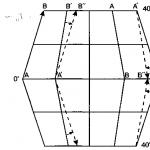Africa is one of the largest continents on earth. It is washed on all sides by seas and oceans: in the north - by the Mediterranean Sea, in the northeast - by the Red Sea, in the west - by the Atlantic Ocean, in the east - by the Indian. In addition to the adjacent waters, its own flow in it. The longest river in Africa is the Nile. Its length is almost 7 thousand km.
The study of the structures of the political, economic and state is engaged in a special science called African studies.
Africa
The area of the mainland is 29 million km. If we take into account the size of the islands, then this figure rises to 30 million km. 55 countries are formed on the territory. They are home to just over one billion people. Also, this continent is considered the birthplace of many ancient peoples. The longest river in Africa, as mentioned above, is the Nile. It plays a very important role for the state, helping to irrigate the land in the right amount, transport many materials on ships, and also meet the needs of the people living here.
Africa is located several and also crosses the equator. Unfortunately, due to the fact that precipitation here is irregular, due to which the irrigation of the land does not reach the desired level, the natural regulation of the atmosphere occurs only near the coast.
Africa is the only continent in the world that stretches from the northern to the southern subtropical climate zone. 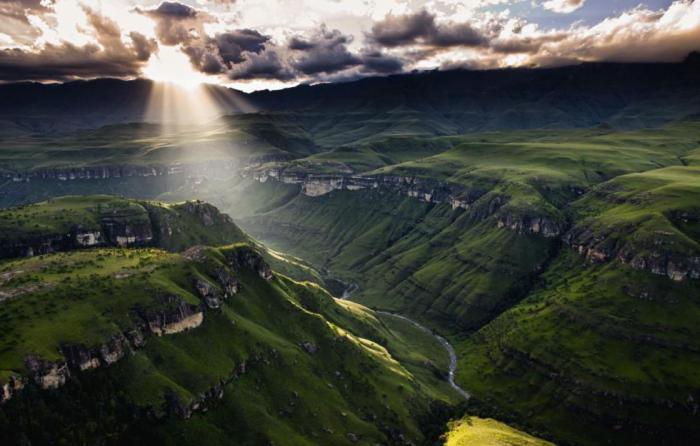
The largest rivers in Africa
This country is rich in water flows. Their distribution over the entire area of the mainland depends on the climate and topography of certain areas. We can immediately say that the rivers are unevenly distributed. This is due to the fact that in some areas precipitation falls very rarely, in others - often. In places where it regularly rains, for example, the river network is quite dense. Three of the largest watercourses in Africa: the Nile, Congo and Niger.
A large number of waterfalls, which are formed due to the corresponding relief, are unsuitable for navigation, but hydroelectric power stations are actively used to generate hydropower. A large number of water flows are fed by rain, as snow, hail or glaciers are not typical for the local climate. In areas where precipitation falls once every few months, dry ones are found. A more detailed description of the rivers of Africa can be found below. 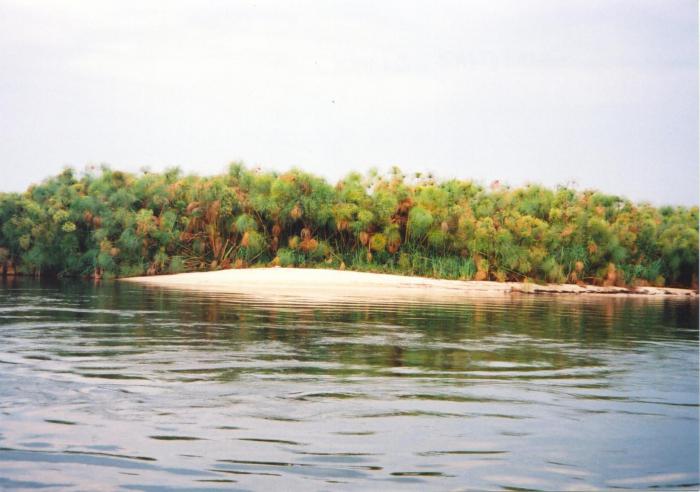
Nile
The greatest river in the world is the Nile. Its name is derived from the Greek "neylos". The source of the water stream, according to some sources, is located in Lake Victoria; the mouth is the Mediterranean Sea. Nile concurrently - the longest river in Africa and almost the largest on the planet Earth, taking 2nd place. The delta of the watercourse is formed at the mouth. The Sahara desert has no tributaries. For the hottest countries in Africa, the Nile is a salvation. Due to its waters, plantations are irrigated, and it is also used for drinking and meeting other needs of the population. The river bed is full-flowing, which contributes to the development of navigation and allows you to transport various kinds of goods. Until a hydroelectric power station was built on the water stream, the Nile River, whose flows were completely regulated, overflowed annually for several hundred kilometers.
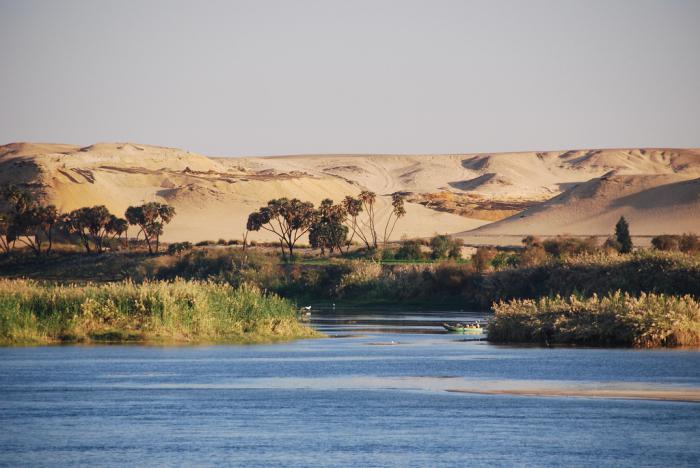
Congo
The Kongo begins near Mumen. An interesting fact is that Zaire and Lualaba are no less popular names for this river. A distinctive feature of the watercourse is that it crosses the equator twice. The Congo is practically the longest river in Africa. Although it is inferior to the Nile in size, it occupies an honorable first place on the mainland in terms of full flow. What is most interesting, it is full-flowing all year round. The mouth of the watercourse is the Atlantic Ocean. 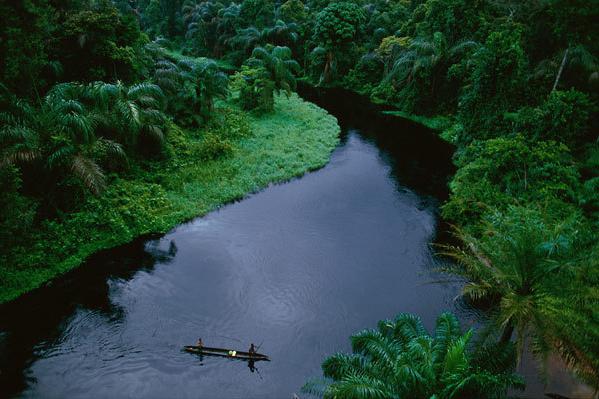
Niger
The Niger closes the top three leading rivers along the length. Most of the watercourse is occupied by rapids and drains. It plays an important role for the state, as it flows through arid territories. Due to the fact that it allows you to irrigate the land, many dams and canals have been built on it. Flowing into the Atlantic Ocean, it forms a large delta. It feeds on rain, the predominant amount of which falls in the summer. Floods occur at this time of the year. The river itself is located in such a way that its upper and lower reaches receive a sufficient amount of precipitation due to the corresponding climate, while the middle one, on the contrary, is constantly subjected to evaporation and partial drought. 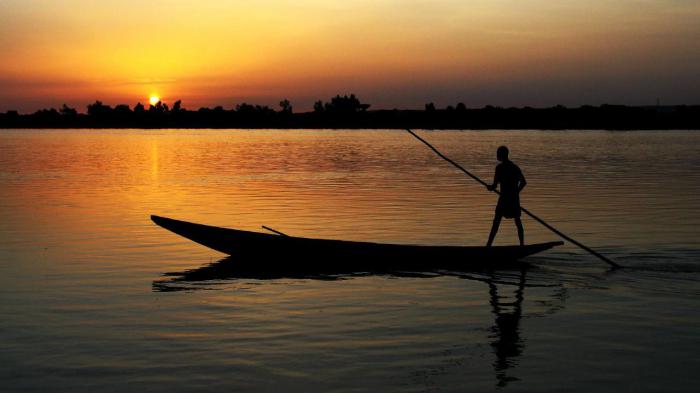
Zambezi
The Zambezi ranks fourth among the largest rivers. In addition, it is the longest among the watercourses flowing into the Indian Ocean. It is interesting what belongs to this river. Its height is almost 120 m. It is also a conditional boundary between the upper and middle reaches. The Zambezi is one of those rivers that have a huge number of tributaries. The largest of them is Kabompo. 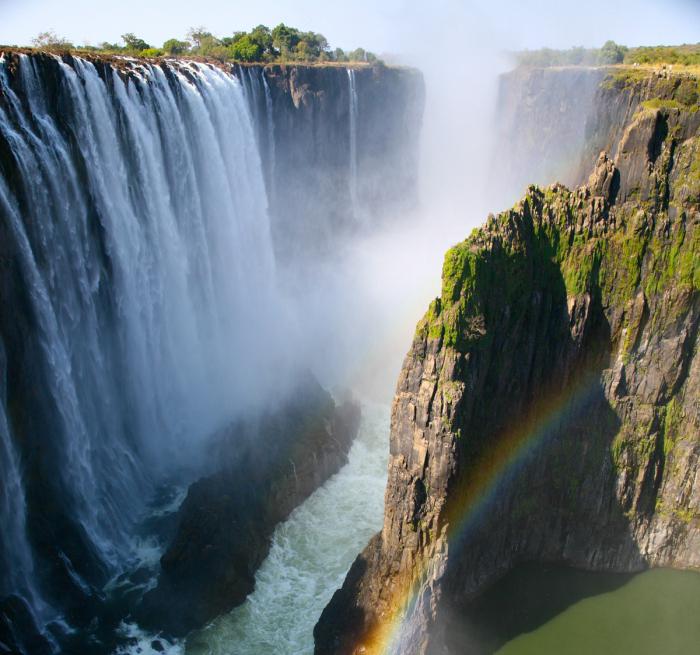
The Atlantic Ocean is the mouth for Africa - the Congo. But the longest watercourse, the Nile, flows into the Mediterranean Sea. Thanks to the flow into one of the nearby oceans, namely the Indian. Due to the fact that the bottom of the rivers is stepped, new water slopes appear. A striking example is Victoria - the most beautiful and largest waterfall on the mainland.
For a long time there were disputes that have not stopped to this day, on the topic "How long is the Nile River?". Until 2013, it was the largest watercourse in the world. Now the Amazon has taken its place. In addition, there remain small disputes between scientists about the hydronyms of water flows. It is only known for certain that the name of the rivers of Africa is closely connected with the history of the state.


